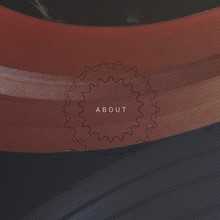In this second part of our look at common PTFE coating problems, we’re going to explore another six issues that cause difficulties for engineers like you.

- Poor product quality and an increase in customer complaints
Frequently occurring coating problems such as blisters and pinholes will have an adverse impact on the quality of your products. Imagine sending out hundreds of loaves of bread or a large batch of rolls that have been contaminated with small flakes of your non-stick coating.
It’s not just in the food industry this can cause serious problems. PTFE coatings have such a broad range of uses, and a low-quality application can lead to customer complaints and more pressure on the production process.
- Sticking problems, less slippery
PTFE coatings are renowned for their non-stick properties as well as many other qualities. Failure to apply a coating correctly to a surface (whatever that may be) can make it less slippery and more likely to stick.
You don’t need us to tell you how problematic a sticky coating can be in the production process. When you’re running shifts on a 24-hour basis, even the smallest issues can have a costly knock-on effect.
- Poor surface appearance of coated items
It’s not just the mechanics of the coating that can cause issues for your end customer. Problems such as cob-webbing can give the coated products a less than appealing appearance and questions may well be asked.
Other common blemishes such as fish eyes, hazing and mud-cracking will be noticeable and spoil the aesthetics of the final product. Clearly this will be more of a problem in some sectors than others, but when one of your customers does notice it, they will start to wonder about anything else that may be wrong with their PTFE coatings and how these have been applied.
- Poor low friction properties
With a Coefficient of Friction (CoF) as low as 0.02, PTFE coatings are well known for their low friction properties. If your coating application has gone awry somewhere along the line, you could be faced with the very real problem of the coating creating more friction than you expected when it’s being put to the test.
- Reduction of mechanical strength and wear properties
Another big advantage of using PTFE coatings is their strength and resistance to being put under enormous amounts of pressure. These characteristics are soon reduced or lost when the coating hasn’t been applied as it should have been.
Errors such as poor surface preparation can lead to peeling and flaking of your coating, which then leaves the item being coated open to unexpected wear and external pressures.
- Electrical properties will be affected
PTFE is widely used in electrical coatings due to its high dielectric properties. Any imperfections in the coating surface can greatly reduce the resistance to electricity which can have far-reaching implications for the end user.
Without wanting to sound too dramatic, the strength of your coatings could be the difference between a safe working environment and a potentially deadly one.
You can read part 1 of common coating problems here
Not all PTFE coating application companies are the same. Don’t put up with problems that are affecting your production and bottom line.
We’ve built our business on reputation. Get in touch now to discover how we can give you more peace of mind as an engineer.



